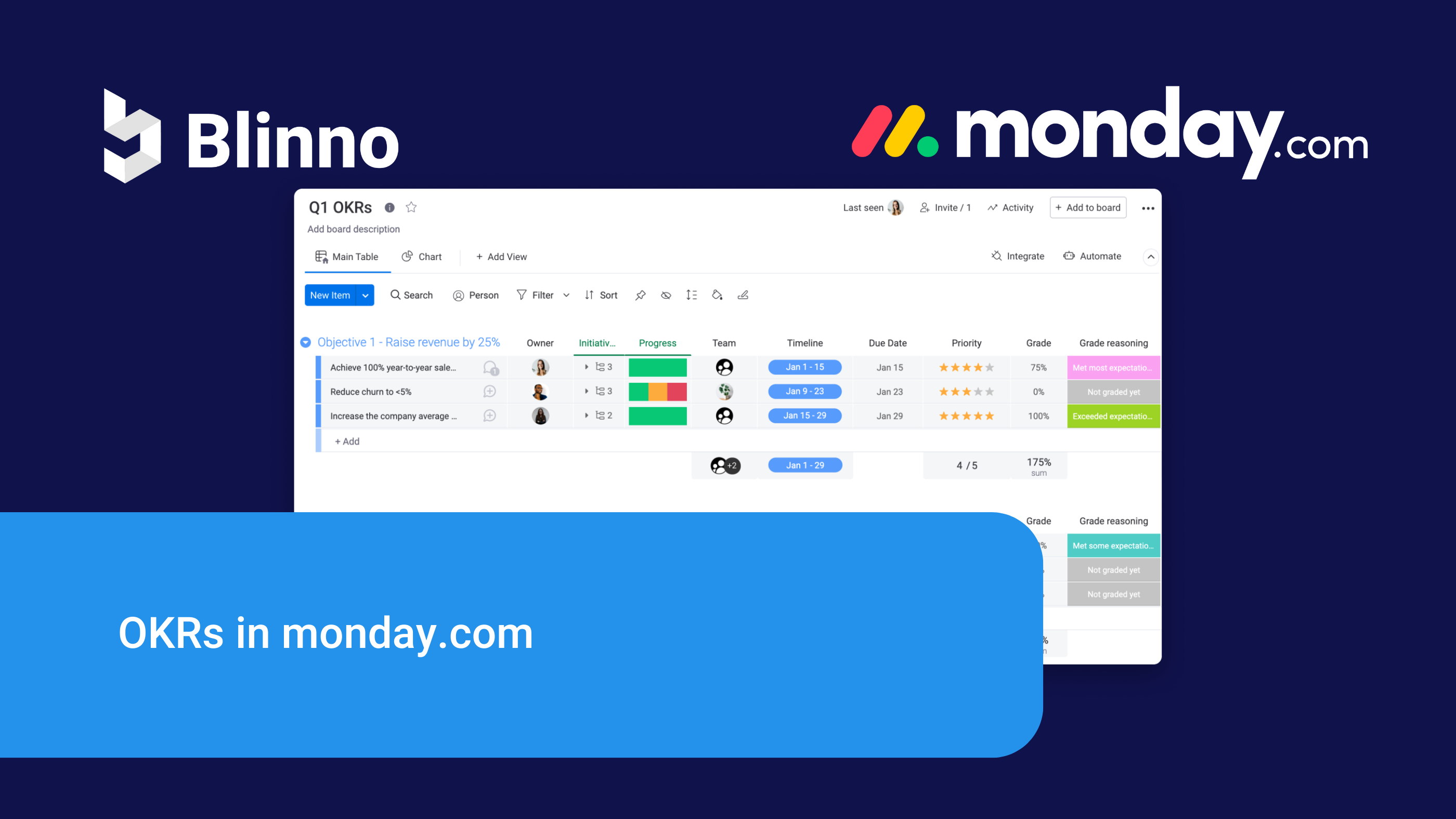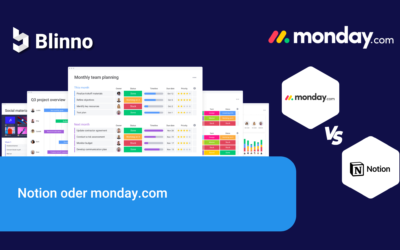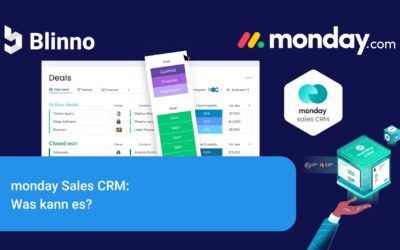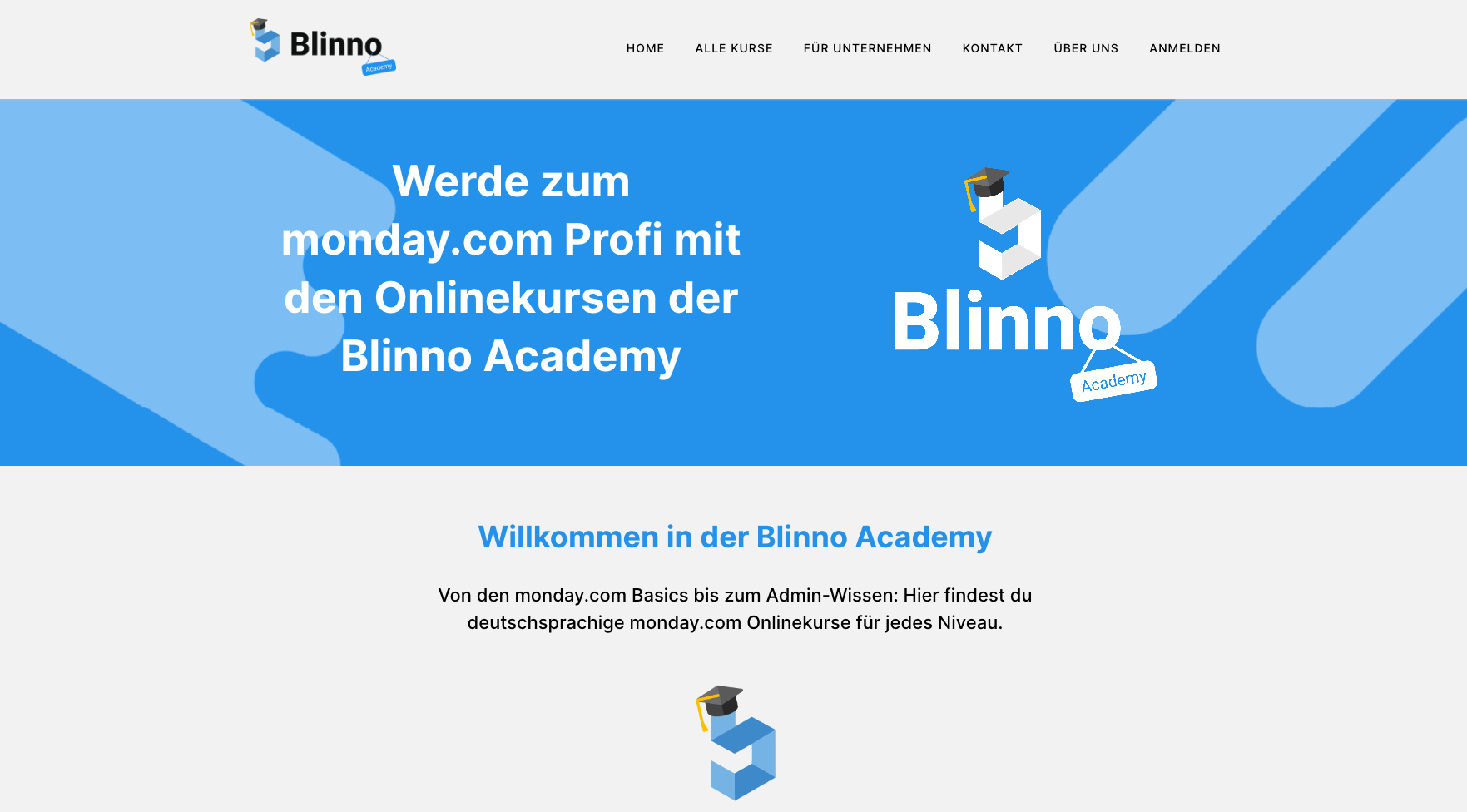For an organization to be successful, it is crucial to implement effective methods for setting goals and monitoring progress. Among the many approaches available in project management, KPIs (Key Performance Indicators), OKRs (Objectives and Key Results) and SMART goals are particularly popular.
If you are wondering exactly what OKRs are, then you’ve come to the right place. This guide gives you a comprehensive overview of how to set your OKRs for 2024: What they are, how they work and when is the optimal time to implement them in your business. You will also receive examples of OKRs and practical tips on how to use them effectively in different teams and departments.
To get you started right away, monday.com has already created an OKR template for you.
What are OKRs?
The acronym OKR, which stands for “Objectives and Key Results”, refers to a method for setting corporate objectives that was originally introduced by Andy Grove at Intel in the 1960s.
Here are four compelling reasons why you should consider the OKR method.
They support companies in this:
Identify key business objectives
Set realistic goals
Determine the time frame for achieving the target
Define OKRs according to the company’s objectives
However, it is also important to understand when OKRs are not ideal.
The OKR framework is not intended to help your company develop an overall vision, market positioning or define long-term strategic business directions.
The OKRs approach assumes that you already have a clear understanding of these elements and focuses on developing concrete, measurable business goals from a holistic perspective. The OKR method is therefore particularly suitable for project management.

How does the setting of OKRs work?
The implementation of OKRs in your company is made up of two main elements: the objective and the key results.
The objective describes the desired end goal. It is not usually expressed quantitatively or in figures – at least not in the initial phase. Rather, it is an overarching vision or goal that typically begins with a noun. Examples of this are:
- Increase in sales
- Acceleration of the closing process
- Reduction in employee turnover
The key results, on the other hand, deal with the specific, measurable steps required to achieve the overarching goal. They break down the big goal into smaller, tangible and quantifiable results. For example, if your objective is ‘increase sales’, the key results could look like this:
- Generation of 50 % more new leads
- 20 % increase in sales in this quarter
- Conclusion of 10 new deals worth over EUR 100,000
Each key result should be clear, measurable and directly aligned with the overarching objective. This ensures that every team member understands what is required to achieve the common goal.
What are effective OKRs?
Effective OKRs are characterized by precise and achievable goals that bring your project closer to the end goal. By setting time-limited and quantifiable milestones, OKRs can provide support in all phases of project management.
Let’s take the example of Google, which has implemented OKRs for more sustainable business processes:
Objective: To redesign processes to reduce waste and environmental impact and extend the life of products to avoid frequent replacement.
KR1: From 2020, all “Made by Google” products will be made from recycled materials.
KR2: By 2025, at least 50% of the plastic in all hardware products will be made from recycled or renewable material.
KR3By 2025, all product packaging will be completely plastic-free and fully recyclable.
What are effective OKRs?
Effective OKRs are characterized by precise and achievable goals that bring your project closer to the end goal. By setting time-limited and quantifiable milestones, OKRs can provide support in all phases of project management.
Let’s take the example of Google, which has implemented OKRs for more sustainable business processes:
Objective: To redesign processes to reduce waste and environmental impact and extend the life of products to avoid frequent replacement.
KR1: From 2020, all “Made by Google” products will be made from recycled materials.
KR2: By 2025, at least 50% of the plastic in all hardware products will be made from recycled or renewable material.
KR3By 2025, all product packaging will be completely plastic-free and fully recyclable.
Avoidance of frequent OKR errors
To use the OKR method effectively, you should avoid these mistakes:
- Don’t set unattainable goals, but choose challenging but achievable tasks.
- Don’t just define goals from top to bottom, but aim for a mixture of top-down and bottom-up goals.
- Provide sufficient resources so that employees can achieve the goals.
- Formulate clearly defined, time–limited and measurable OKRs.
- Regularly monitor and discuss progress.
- Don’t confuse OKR goals with daily tasks – use a work management system to monitor progress.
- Set an appropriate number of goals – usually three to five is sufficient, but evaluate them every quarter.
If you are unsure how to set an OKR target, you can take a look at the following OKR examples for guidance and inspiration.
OKR examples for companies
When it comes to defining OKRs for your company, you often encounter the challenge of not defining OKRs directly, but first setting general corporate goals. This may sound confusing at first, but don’t worry, we’ll explain it to you.
Instead of defining OKRs directly, you first define the company’s overarching goals. These are then broken down into specific OKRs for the various departments.
Here are three examples of how a corporate goal can be broken down into specific goals for different teams within an organization:
Objective 1: Increase in sales
- Goal for the sales team: Increase monthly sales.
- Goal for the product team: Optimize access to advanced features to improve the integration of the product into the customer’s workflow.
- Goal for the customer service team: to increase customer loyalty.
Objective 2: Expansion of market share
- Objective for the sales team: Increase the average volume of business closed.
- Objective for the marketing team: to improve brand awareness.
- Goal for the product team: Optimization of the user experience by implementing competitor functions.
Objective 3: Reduction in operating costs
- Goal for the admin team: To make the payment process more efficient for suppliers in order to minimize penalties for late payments.
- Goal for the marketing team: Reduce marketing expenditure
- Objective for the HR department: Reduction of personnel costs through restructuring.
In the next step, we look at how these team goals can be transformed into practical and actionable OKRs.
OKR examples for the sales team
Objective 1: Sales increase per month
- Key Result 1: Increase in the number of transactions concluded from 400 to 600.
- Key Result 2: Increase in the average value of a subscription to EUR 750 per month.
- Key Result 3: Increase in completion rate from 50 % to 60 %.
Objective 2: Increase in the average size of a deal
- Key Result 1: Increase in the average value of a subscription to EUR 900 per month.
- Key Result 2: Adjustment of lead scoring criteria to favor larger deals.
- Key Result 3: Increase in the proportion of high-quality leads generated from 20% to 30%.
Objective 3: Acceleration of the sales process
- Key Result 1: Recruitment of 5 new team members to ensure rapid processing of new leads.
- Key Result 2: Restructuring of the e-mail campaign from 7 steps over 32 days to 6 steps over 24 days.
- Key Result 3: Reduction in the average time to close a sale from 66 to 54 days.
These OKR examples show how specific, measurable and achievable targets can be set within the sales team to improve overall performance and efficiency.

OKR examples for the marketing team
Objective 1: Increase in brand awareness
- Key Result 1: Achievement of 10 new media placements.
- Key Result 2: Publication of 5 new blog posts to attract 3,000 additional website visitors.
- Key Result 3: Increase the number of search results on the first page from 14 to 22.
- Key Result 4: Increase in brand awareness among the target group from 42% to 60%.
Objective 2: Reduction of marketing costs
- Key Result 1: Discontinuation of all TV advertising campaigns.
- Key Result 2: Reduction of the marketing team from 10 to 8 employees.
- Key Result 3: Reduction of the budget for content creation by 10 %.
Objective 3: Increase in generated leads
- Key Result 1: Increase in the number of new leads per month from 1,200 to 1,600.
- Key Result 2: Doubling of expenditure on social media from EUR 10,000 to EUR 20,000 per month.
- Key Result 3: Ensure that the top 100 ranked pages and blog posts on the website each contain a relevant and engaging call-to-action (CTA).
These OKR examples illustrate how the marketing team can increase brand awareness, manage costs efficiently and boost lead generation through precise and measurable goals.
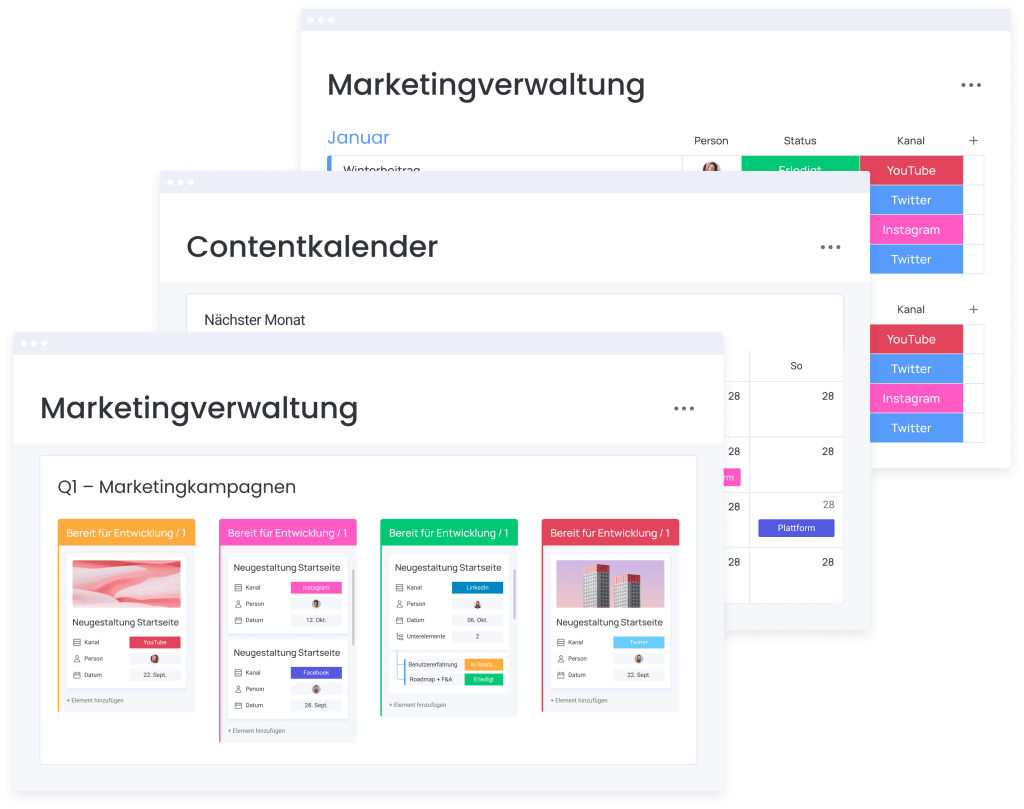
OKR examples for HR and personnel development
Objective 1: Reducing labor costs through corporate restructuring
- Key Result 1: Reduction of monthly wage costs by 20 %.
- Key Result 2:Reduction of 20 jobs.
- Key Result 3: Identification of 3 dispensable management positions.
Objective 2: Increase in employee commitment
- Key Result 1: Achievement of an average weekly employee satisfaction of at least 4 within 90 days.
- Key Result 2: Introduction of a 360-degree feedback initiative with a participation rate of 50%.
- Key Result 3: Organization of a monthly company dinner.
Objective 3: Reduction in employee turnover
- Key Result 1: Reduction of the fluctuation rate from 10 % to 5 %.
- Key Result 2: Increase employee satisfaction to at least 4 for all employees.
- Key Result 3: Ensuring that the salaries of all employees meet or exceed the market average, depending on position and sector.
These OKR examples illustrate how HR can use targeted measures to optimize operating costs, increase employee engagement and reduce turnover rates to create a more productive and satisfying work environment.
OKR examples for accounting and administration
Objective 1: Optimization of the payment process for suppliers to reduce late payment penalties
- Key Result 1: Assignment of supplier payments to a special admin assistant to simplify the process.
- Key Result 2: Implementation of an automated dunning system to ensure punctual payments before due dates.
- Key Result 3: Achievement of a default interest rate of 0% over a period of three consecutive months.
Objective 2: Creating an attractive working environment in the office
- Key Result 1: Implementation of an employee feedback campaign with a participation rate of 80% of the workforce.
- Key Result 2: Solving the five most frequently mentioned workplace problems.
- Key Result 3: Organization of a monthly staff meeting or dinner.
Objective 3: Improving the management of company documentation
- Key Result 1: Development and introduction of a folder hierarchy structure with the approval of all five teams.
- Key Result 2: Collection of positive feedback from 90% of users of the new structure.
These examples show how the admin team can optimize the payment process, create a more attractive working environment and improve the management of company documents through specific, measurable and achievable goals.
OKR examples for customer service
Objective 1: Increase customer loyalty
- Key Result 1: Reduction of waiting times to less than 5 minutes.
- Key Result 2: Reduction of the fluctuation rate in customer service from 10 % to 5 %.
- Key Result 3: Recruitment of 3 additional customer service employees for faster problem resolution.
Objective 2: Increase in customer satisfaction
- Key Result 1: Collection of 2,000 responses to the customer satisfaction survey.
- Key Result 2: Identification of 5 key areas to improve customer service and products.
- Key Result 3: Conducting telephone interviews with the 100 most important customers.
Objective 3: Speed up the processing time of customer service tickets
- Key Result 1: Reduction in the average processing time for tickets from 10 to 7 days.
- Key Result 2: Implementation of a new helpdesk ticket system.
- Key Result 3: Recruitment of 5 additional customer service employees.
These examples show how the admin team can optimize the payment process, create a more attractive working environment and improve the management of company documents through specific, measurable and achievable goals.

monday work management helps you to set OKRs
With the knowledge of how to create OKRs for different departments, the question of their effective use and progress control now arises. This is where monday.com comes in, a tool that helps you set, monitor and achieve your OKRs efficiently.
monday.com offers a variety of tools, including timeline software and project management templates, ideal for portfolio management. Let’s take a look at how teams effectively manage their goals and key results with monday.com’s pre-built OKR template:
The template includes different groups for each business objective, such as:
- Objective 1: Launch of the Android version.
- Objective 2: Doubling of the company’s growth.
- Objective 3: Developing into a socially responsible organization.
Each goal has three measurable key results that can be tracked using the following column types:
Personen: Assignment of team members to certain key results.
Priorität: Determining the urgency of individual key results.
Status: Overview of the progress of each key result.
Resultate: Numerical representation of the progress achieved.
Zeitleiste: Visualization of the time frames for the key results.
monday.com brings transparency, accountability and structure to your OKRs. The intuitive drag-and-drop functionality allows you to adjust goals as needed, and detailed reports keep you up to date on progress.
Further possible uses of monday.com
- Setting targets
- Optimization of business processes
- Definition of project goals
- Creation of tasks
Note that the OKR framework is not intended to clarify the overall vision of your company. Instead, it helps you to translate these into specific, measurable and team-oriented goals that support the achievement of the overall objective.
Are you ready to create and track OKRs for your team? Then use the ready-made OKR template from monday.com – it’s already waiting for you!
Conclusion
In this blog post, we have seen how effective OKRs can be created for different departments of a company. We emphasized the importance of clear, measurable and achievable goals and gave examples of OKRs in areas such as sales, marketing, HR and more. It is important that OKRs not only set goals, but also structure the path to achieving them.
A key element to the success of OKRs is choosing the right tool to manage and track these goals. This is where monday.com, a versatile work management system that not only facilitates the creation and tracking of OKRs, but also ensures transparency and efficiency throughout the organization.
As a proud partner of monday.com, we are not only available to answer your questions, but also actively support you in the implementation and realization of OKRs in your company. If you’re ready to maximize your team’s performance with customized OKRs, don’t hesitate to contact us. Our team of experts will help you to fully exploit the potential of monday.com and effectively achieve your business goals. Let’s take the next step towards success together!
Frequently Asked Questions (FAQ)
Do you have any questions? We may have been asked this question before and we have listed and answered it below.
What does OKR stand for?
The acronym “OKR” stands for Objectives and Key Results.
It is a goal-setting method that can help teams and individuals to set challenging goals with measurable results. OKRs help you track progress, create alignment and drive commitment to measurable goals in your organization.
How do I rate OKRs?
At the end of each milestone, you evaluate an OKR according to whether the KR has been achieved; You can use a simple “yes/no” rating, a numerical rating or a “traffic light system”.
Normally you rate OKRs on a scale from 0.0 to 1.0, where 1.0 stands for “complete”, like this:
Red – We have made no real progress: 0.0 to 0.3.
Yellow – We have made progress, but have not quite finished: 0.4 to 0.6.
Green – We have delivered: 0.7 to 1.0.
How many OKRs should I set?
You can set any number of OKRs, but usually 2 to 3 targets with 3 to 5 corresponding key results each work well.
In larger organizations, there can be several levels of OKRs that extend to the individual departments, teams and individuals – as in the examples above. For smaller organizations, however, you may only have one set for everyone.
Source: monday.com

